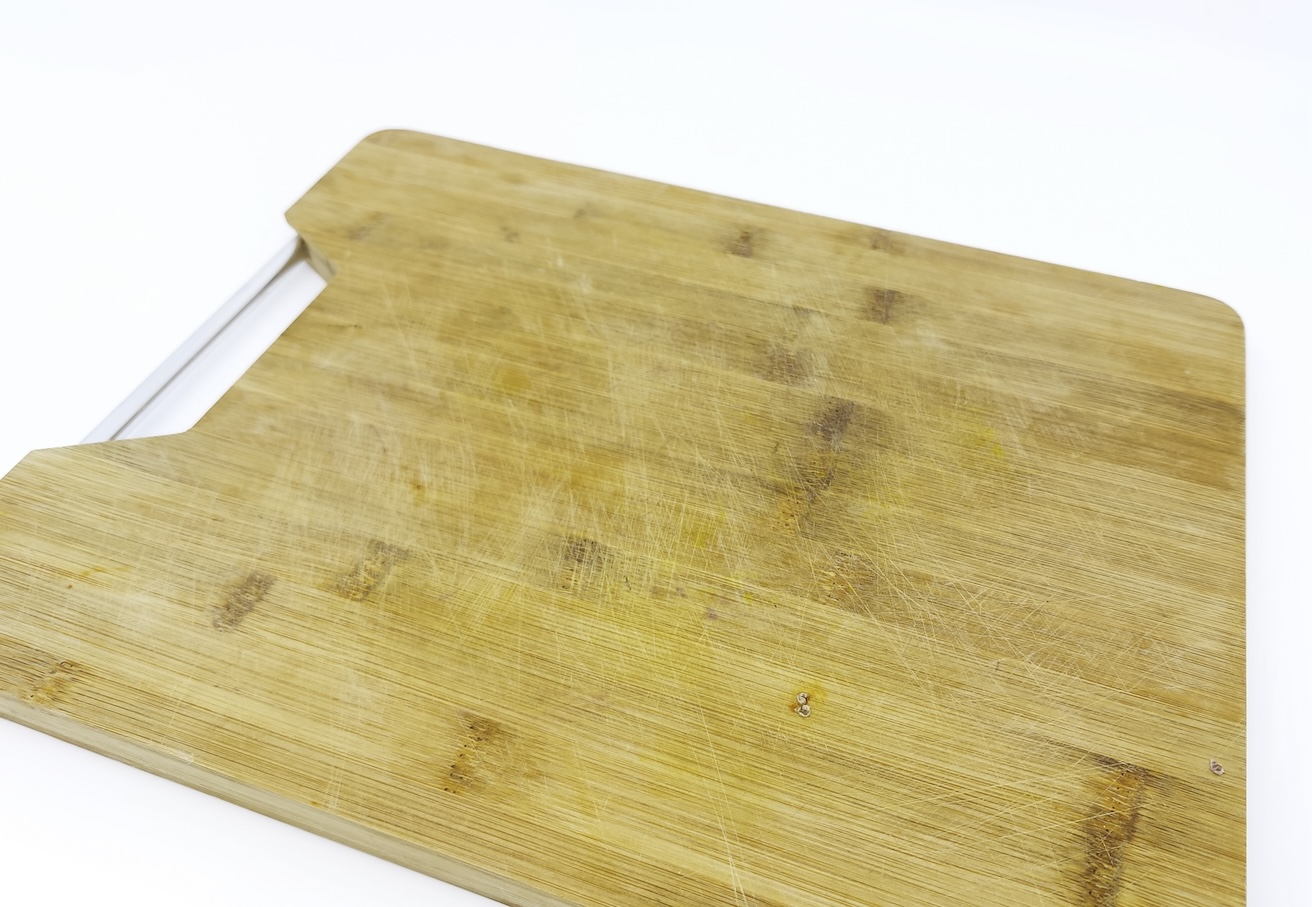Free Shipping to the USA & UK
Free Shipping to the USA & UK

Among the most popular materials for cutting boards are wood, plastic, and bamboo. While wooden cutting boards have long been a favorite due to their aesthetic appeal and durability, there are several reasons why they might not be the best choice for your kitchen. Here's a closer look at some of the downsides of wooden cutting boards.
Wood is a porous material, which means it can absorb moisture, juices from raw meat, and other food particles. This creates the perfect environment for bacteria to thrive, especially if the board is not cleaned and dried properly after each use. Even though some research suggests that wood has natural antimicrobial properties, it’s still possible for bacteria to penetrate deep into the wood, making it difficult to sanitize completely. Over time, this can lead to potential food safety risks, particularly when cutting raw meat, poultry, or fish.
Compared to plastic or glass cutting boards, wooden boards require more care to keep them in good shape. They can't be washed in a dishwasher, as the heat and water can cause the wood to warp, crack, or split. Hand washing is necessary, but that alone may not be enough to fully sanitize the board. Moreover, wood needs to be oiled regularly to prevent it from drying out and cracking, adding an extra maintenance step to your kitchen routine.
Since wood absorbs water, prolonged exposure to moisture can cause it to swell, warp, or crack. This not only shortens the lifespan of the cutting board but also creates cracks and crevices where bacteria and mold can accumulate. If a wooden cutting board isn't dried thoroughly after each wash, it can start to deteriorate quickly, leading to unsanitary conditions and the need for frequent replacement.
Because of the potential for bacteria to hide in the pores of a wooden cutting board, cross-contamination is a real concern. If you use the same board for cutting raw meat and then chopping vegetables without thoroughly cleaning it, harmful bacteria like E. coli or Salmonella can transfer from the meat to your produce. To minimize this risk, some people use multiple cutting boards for different food types. However, this isn’t always practical, and it can be hard to guarantee that the wooden board is fully clean between uses.
While wood is softer than plastic or glass and can be gentler on knives, over time, the surface of a wooden cutting board can develop grooves and cuts from regular use. These grooves not only harbor bacteria but also make cutting less smooth and can even dull your knives. Plastic cutting boards, on the other hand, tend to stay smoother for longer and are easier to clean thoroughly when they do develop grooves.
High-quality wooden cutting boards, especially those made from hardwoods like maple or walnut, can be expensive. Given the extra maintenance they require, they might not be the most cost-effective option in the long run, especially if they need to be replaced frequently due to cracking or warping.
While wooden cutting boards have their advantages, such as their natural beauty and durability, they come with several significant downsides, especially in terms of hygiene and maintenance. For those who prioritize ease of cleaning, sanitation, and long-term usability, plastic or composite boards might be a better choice. If you do choose a wooden cutting board, it’s essential to care for it properly to avoid potential food safety issues and ensure its longevity.